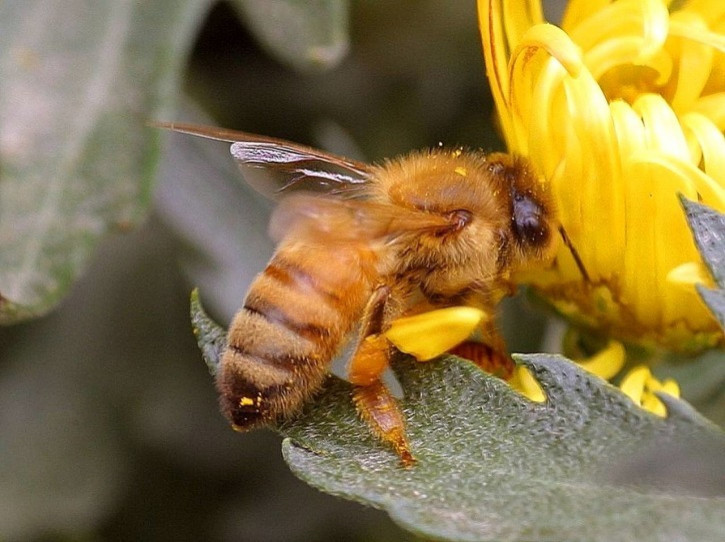New Study Linking Honeybee Deaths To Pesticides Rouses Public Outcry

Public outcry is growing as the results of a new study, supporting the growing consensus that American honeybees are dying en masse from exposure to controversial pesticides, reverberate through the national consciousness.
The two common insecticides examined in the report, dubbed neonicotinoids, were identified in the study as being key contributors to the phenomenon known as “Colony Collapse Disorder,” or CCD. The term was coined to describe an alarming trend of honeybees abandoning their hives in large numbers over the past decade.
CCD has been increasingly prevalent since 2006, causing a massive die-off of the vital natural pollinators, and the new study by the Harvard School of Public Health identifies neonicotiniods as a major contributor to the phenomenon.
The study’s emergence has generated renewed interest in the topic of neonicotinoids and their apparent detrimental impacts on the U.S. honeybee population. The report recreates a study released by the same researchers two years ago that first introduced the link between the popular insecticides and CCD.
The sustained public concern over the negative effects of neonicotinoids has reached statehouses across the nation via petitions, letter-writing campaigns and other measures, and some legislators are beginning to take notice.
In Minnesota, for instance, 17 state lawmakers called out the state’s Department of Agriculture over its year-old effort to review the pesticides, criticizing it for being too weak to restrict or ban them in the state.
"This is a concern in farm country, the suburbs and the city," state Rep. Rick Hansen, of the Democratic-Farmer-Labor party, told the Minneapolis Star Tribune. "We are asking them to use [their] powers to make the best result for Minnesota."
The department called the criticisms “premature,” as the results of its review have yet to be released.
Neonicotinoids are banned in the European Union and are under reevaluation by the U.S. Environmental Protection Agency, which currently allows them to be used on crops.
The study, which appeared in the latest issue of the Bulletin of Insectology journal, relied on observation, conducted in conjunction with the Worcester County Beekeepers Association, of 12 honeybee colonies which were treated with imidacloprid or clothianidin -- two common neonicotinoids -- and six control colonies that had not been exposed to the chemicals.
The study determined that that by the end of winter six of the 12 hives that had been treated with the pesticides had been abandoned by the honeybees that occupied them, while just one of the control colonies was decimated as a result of an unrelated fungus infestation. The previous study by the same research group, conducted in 2012, saw 94 percent of the colonies that had been exposed to neonicotinoids collapse by the end of winter.
“We demonstrated again in this study that neonicotinoids are highly likely to be responsible for triggering CCD in honey bee hives that were healthy prior to the arrival of winter,” study author Chensheng (Alex) Lu, an associate professor of environmental exposure biology at Harvard School of Public Health, said in a statement announcing the new study’s findings.
© Copyright IBTimes 2024. All rights reserved.





















